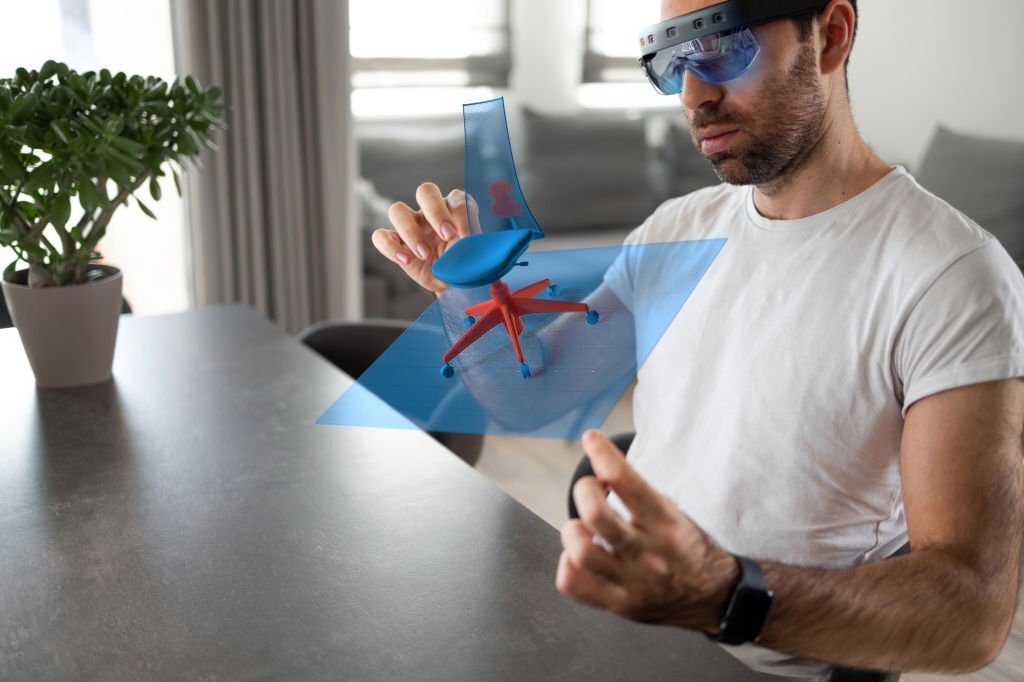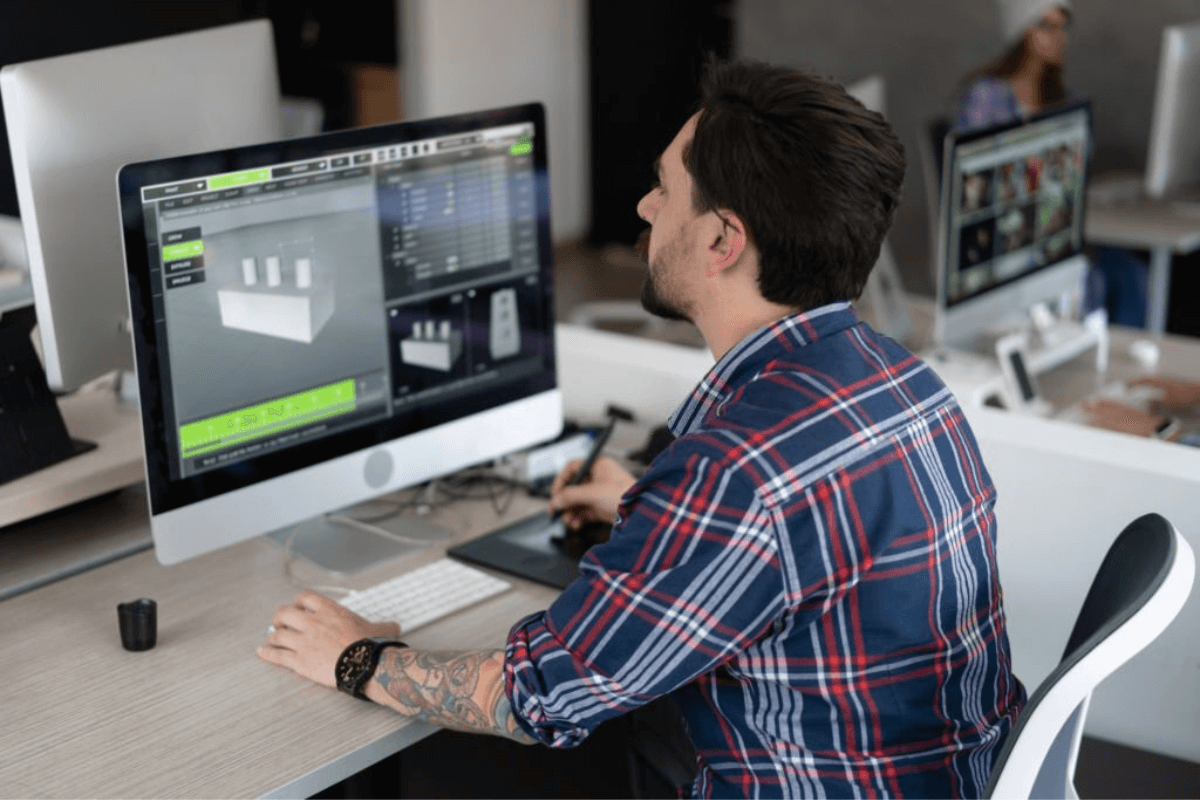The Role of 3D Graphics in Virtual and Augmented Reality
Uncover the importance of 3D graphics in virtual and augmented reality, and how they create immersive experiences for users
Virtual Reality (VR) and Augmented Reality (AR) have gained significant attention in recent years, revolutionizing how we interact with digital content and opening new possibilities in various fields such as gaming, entertainment, education, training, healthcare, and more. 3D graphics play a crucial role in extending the immersive reality of AR/VR apps further. Here we are going to explain this role in detail.
Importance of 3D Graphics in VR and AR
3D graphics play a crucial role in the success and adoption of VR and AR technologies, as they are responsible for creating virtual worlds or augmenting the real world with digital content. Here are some key reasons why 3D graphics are essential in VR and AR:
• Immersive and Realistic Experiences:
The primary goal of VR and AR is to provide users with immersive and realistic experiences that make them feel like they are in a virtual or augmented environment. 3D graphics enable the creation of visually appealing and detailed virtual worlds or realistic virtual objects that users can interact with, enhancing the sense of presence and immersion.
• Interaction and Manipulation of Virtual Content:
In VR and AR, users interact with digital content through gestures, movements, or voice commands. 3D graphics created with robust technologies such as Three.js enable the creation of interactive virtual objects or characters that respond to the user's input in real-time, allowing them to manipulate and interact with the virtual content as if it were real.
• Visualization of Data and Information:
In many AR applications, such as medical training, architectural design, or industrial maintenance, 3D graphics visualize complex data or information more intuitively and understandably.
• Aesthetics and Artistic Expression:
In VR and AR applications, 3D graphics are also used for creative and artistic purposes, allowing artists and designers to express their ideas and visions in virtual or augmented environments. Virtual art galleries, concerts, and fashion shows exemplify how 3D graphics create unique and immersive experiences that blend art and technology in VR and AR.
Challenges of 3D Graphics in VR and AR
While 3D graphics are essential in VR and AR, there are several challenges that developers and designers face when creating virtual and augmented content. Some of the main challenges include:
• Realism and Fidelity:
Achieving high levels of realism and fidelity in 3D graphics can be challenging, as it requires detailed modeling, texturing, and rendering techniques to replicate the physical world accurately. Realistic lighting, shadows, reflections, and physics simulations are crucial for creating convincing virtual environments and objects.
• Interaction and User Experience:
Designing intuitive and natural interactions in VR and AR can be challenging, as it requires careful consideration of user ergonomics, spatial mapping, and input methods. Designers need to create virtual objects and interactions that are easy to understand, learn, and use while also being enjoyable and engaging.
• Cross-platform Compatibility:
VR and AR experiences can be delivered through various devices and platforms, such as PC-based systems, gaming consoles, mobile devices, and standalone headsets. Ensuring that 3D graphics are compatible and optimized for different hardware configurations, operating systems, and input devices can be challenging. Each platform may have its specifications, limitations, and performance requirements.
• Content Creation and Workflow:
Creating 3D graphics for VR and AR involves complex workflows that may require specialized software, hardware, and skills. Designers and developers must create 3D models, textures, animations, and other assets and integrate them into the virtual or augmented environment.
Future Prospects of 3D Graphics in VR and AR
Despite the challenges, the prospects of 3D graphics in VR and AR are promising. As technology advances, we can expect significant improvements in the quality, performance, and accessibility of 3D graphics in VR and AR. Here are some prospects of 3D graphics in VR and AR:
• Enhanced Realism:
Advancements in graphics processing units (GPUs), rendering techniques, and real-time graphics engines will likely enable even higher levels of realism and fidelity in virtual and augmented content. Improved lighting and shading techniques, advanced physics simulations, and realistic simulations of materials and textures will contribute to more convincing and immersive virtual environments and objects.
• Improved Interaction:
With advancements in input devices, such as hand-tracking, eye-tracking, and haptic feedback, interactions in VR and AR will likely become more natural and intuitive. This will enable more sophisticated and immersive interactions with virtual objects, characters, and environments, enhancing the user experience.
• Cross-platform Compatibility and Standardization:
As VR and AR devices become more widespread, there will likely be efforts toward standardization and interoperability to ensure that 3D graphics can be seamlessly deployed across different platforms and devices.
• Improved Content Creation Tools and Workflows:
As VR and AR content demand increases, we can expect advancements in content creation tools and workflows. More user-friendly and accessible software tools may become available, making it easier for designers and developers to create 3D graphics for VR and AR without requiring specialized skills or hardware.
• Increased Collaboration and Social Interaction:
VR and AR can revolutionize how people collaborate and interact with each other, both in professional and social settings. Powered by 3D graphics, this can enable remote collaboration, virtual meetings, virtual conferences, and social interactions in a more immersive and engaging way, enhancing communication and productivity.
• New Forms of Art and Expression:
VR and AR provide new opportunities for artists and creatives to explore new forms of art and expression. With 3D graphics, artists can create immersive and interactive virtual experiences beyond traditional mediums. Virtual sculptures, virtual installations, and virtual performances are examples of how 3D graphics can create unique and innovative artistic experiences in VR and AR.
Summarizing
3D graphics play a crucial role in virtual and augmented reality, providing the visual and interactive elements that make these immersive technologies come to life. They enable realistic and convincing virtual environments and objects, facilitate natural and intuitive interactions, and enhance the user experience. Despite the challenges, the prospects of 3D graphics in VR and AR are promising.

Subscribe & get all related Blog notification.





Post your comment